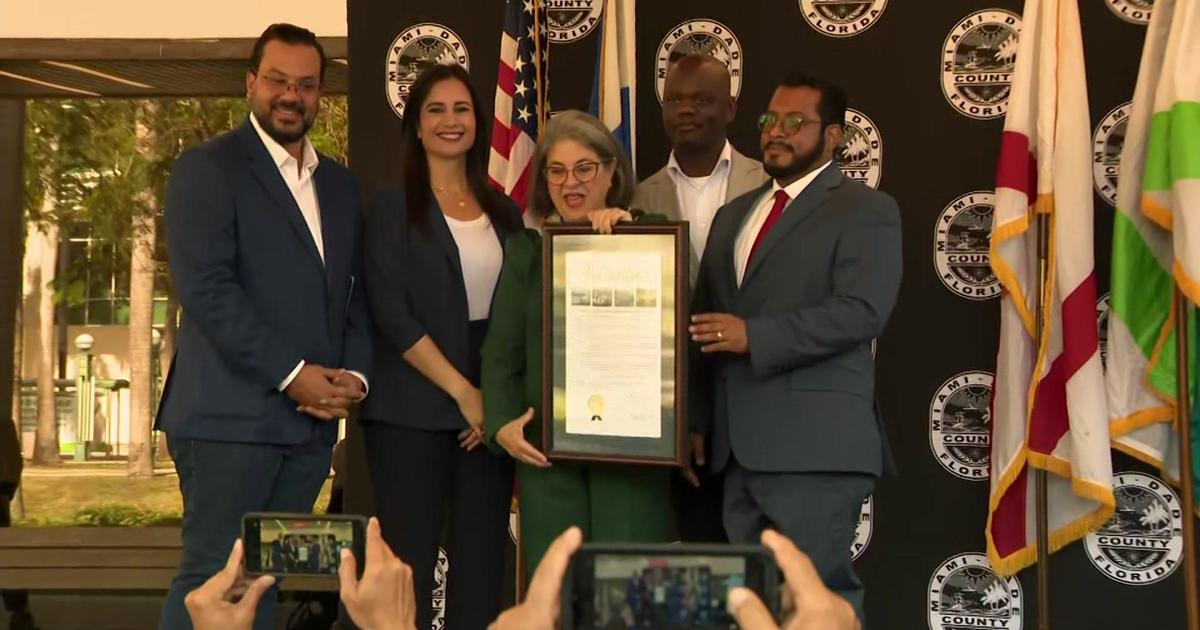Life and Death Inside Zoo Miami
Follow CBSMIAMI.COM: Facebook | Twitter
MIAMI (CBSMiami) -- Every year more than a million people visit Zoo Miami. Spread across 700 acres, it is one of the largest zoos in the country. The zoo is home to 3,000 animals, representing 500 different species - including 40 endangered species.
Visitors who travel its winding trails, see one side of the zoo - a side that seems simple and almost effortless.
What the public never sees, however, are the actions of those who care for the animals - especially the work of the zoo's medical staff.
It is tense, taxing and emotional work that encompasses the entire circle of life - from births to deaths.
CBS4's interest was sparked because of a series of high-profile deaths at the zoo.
In the past two years the zoo has lost JJ the silver back gorilla, a female lion Asha, an Asian elephant named Maude, the Malaysian tiger Tevy, King George the cheetah, and Fezzik, a 17-year-old Somali giraffe who died during hoof surgery.
To the zoo's credit, we know about these deaths because the zoo doesn't try to hide it. They send out press releases whenever a significant animal at the zoo dies.
Click here to watch Jim DeFede's report.
Realizing, however, these deaths could raise question, zoo officials invited CBS4 News to conduct its own review of the zoo and gave the station unprecedented access to zoo records and its staff.
The responsibility for inspecting zoos and making sure they provide proper care to their animals is the U.S. Department of Agriculture. Since June 2012, USDA veterinarians have conducted nine inspections at the Zoo Miami. A review of those records found only two instances when the zoo's failures led to the unnecessary death of an animal.
In 2012, the staff failed to properly diagnose a parasite inside an Arabian Oryx that eventually had to be euthanized.
In 2013, a camel named Randy slipped his head into a hole in a chain link fence, panicked, fell and died the next day from his injuries. The inspectors found the zoo staff had failed to properly maintain the fence.
"That was our mistake, we did not fortify that fence as well as it should have been fortified and it enabled a camel to get caught under a fence and unfortunately the camel died," admitted Ron Magill, the zoo's communications director. "It was a tremendous mistake but I can promise you this, it will never happen again."
The Oryx death was just as unfortunate.
"The bottom line is we're going to make mistakes, everybody's going to make mistakes, how we learn from those mistakes is what's important," Magill said. "But I challenge you to go to any human hospital in this world, that has the best doctors, the best care technicians, and find mistakes haven't been made."
Perhaps no decision is harder on the staff than the decision to euthanize an animal.
CBS4 News followed the case of Sarafina, a 16-year-old camel who suffered from severe arthritis. Efforts to treat Sara failed and every time doctors tried to examine her or attempt to provide her treatment that might relieve her pain, she would fight them and injure herself even worse.
"You just kind of take into consideration what's best for her and how long we are going to maintain her in this type of fashion," said Carey Stanton, one of the keepers who care for Sarafina. "But I don't expect her to recover."
Despite the pain she experiencing, Sara was spending almost all of her time standing - a sign he was afraid if she got down on the ground she might not be able to get back up. She was losing weight and eating only half as much food as she should. And she was not interacting with the other animals.
"She could be alive for a very long time and yet be crippled," said Dr. Chriss Miller, the lead veterinarian at the zoo. "We really aren't in a good position to help her through that so as a group - the keepers, the supervisory staff for the animal, the people for the animal sciences department, the veterinary department - we talk about what we can do. How long we think she can go on like this and whether or not her quality of life is still what we think is acceptable. It's really a very subjective call and that's why we kind of make it a team effort."
Once the decision was made to end Sara's life, Miller led the team. She darted Sarafina with a tranquilizer while the keepers responsible for Sara watched stoically. This has been a particularly tough case for Miller, who gave Sara her first exam shortly after Sara was born at the zoo in 1999.
Before administering the final injection that would end Sarafina's life, Miller and the keepers paused around the animal for a moment.
"Personally I do believe that animals have souls and I feel like they need to have a little bit of time to whether its leave their body or whatever," Miller said. "I just feel like it's more dignified for the animals."
Sarafina would be the last animal Miller would treat at the zoo. After 24 years, she was retiring. She would spend her last day on the job performing Sara's autopsy.
Despite the sad ending, Miller said her time at the zoo was priceless.
"I think it was an experience that I think I will never forget obviously," she said, "and I'm glad that I've done."
(CBS4 News spent four months at the zoo. In the coming weeks the station will produce a half hour special on life and death decisions made every day.)



